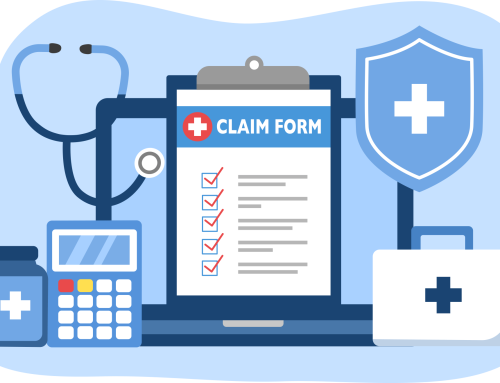Key Metric: Patient Follow-Up
One of the biggest misconceptions in medicine right now, which also happens to be one of the most costly, is that the patient’s care ends when they are discharged. The truth is, often times it’s what happens (or doesn’t happen) when a patient goes home that determines their outcome. Whether they end up readmitted or not, the key metric of 2015 is one that you might not even be aware you’ve been missing.

Meaningful Use
As healthcare systems embrace the next phase of Meaningful Use, one area that is gaining some much-needed attention this year is patient follow-up. As patient reported data and outcomes become more fully integrated into care plans, physicians and healthcare providers are going to need to utilize technology as a means to stay abreast of patient’s post-hospital condition.
Preference For Contact: To Each Their Own
The first priority of any healthcare provider before discharging a patient from the hospital should be — but often is not — establishing follow-up protocol. Each individual patient and their caretakers may have a different preference for patient follow-up. Some may be content with a phone call or an email. Younger patients may be more willing to text, use patient portals or social media where applicable.
Charge nurses are often tasked with following up with patients post-discharge, but they may not have the requisite time or information to help address a specific patient’s concerns. Furthermore, a patient may not even know how to engage them in a discussion about post-hospitalization trouble they may be encountering. To some extent, they may not have been fully educated by staff prior to going home, and thus, may not even know what to be looking for in terms of post-discharge complications. It is for this reason that needless readmissions seem to occur in droves: patients re-enter the hospital, often via the emergency room, either because they were not educated on what their post-hospital course would look like or they ran into a complication and were unable to get in touch with their primary care doctor or the physician who treated them while they were hospitalized.
“Lost To Patient Follow-Up”
When such contact doesn’t occur, it’s said in the healthcare lexicon that the patient has been “lost to follow-up.” It’s not always the provider’s fault that this happened, of course. The best laid plans — when nurses and doctor’s offices have done all that they can to ensure a patient is contacted post-discharge—may not pan out if the patient is not compliant with the follow-up. That’s the next challenge on the agenda for 2015: how do we, as healthcare professionals, ensure that patients allow us to follow-up with them?
The Big Picture
On the population health level, we need to identify which patient populations at the most at-risk for noncompliance and innovate ways to make follow-up more intuitive and convenient. Technology is in our corner here: mobile health, telemed and other current technological innovations completely lend themselves to changing the way we follow-up with patients. Whether we call, video-conference, text or email there are more options for patients and providers than ever before. Hopefully this means that the “lost to patient follow-up” population will continue to narrow.
Other roadblocks to patient follow-up?
It might not seem like shooting off a quick email to a patient would put out most healthcare professionals, but thinking that doesn’t take into consideration what the intention of that email is: to open up and engage in a dialogue with the patient about their aftercare. Sure, it might take less than five minutes for a busy provider to shoot off that follow-up email, and then they can check off the box in the EMR saying that the did so — but that’s not really the point, is it? The follow-up email should be the first step in an ongoing dialogue about the patient’s health. That means that when the patient responds, the provide will need to read and respond to any questions the patient poses, address problems, refill prescriptions, review their chart — all while obliging HIPAA protocols, of course. Which, in the ever-evolving technological landscape is always subject to change.
Will Technology Help or Hurt?
The question is, how can providers and patients fully utilize technology to make patient follow-up relatively quick and painless? Are we closer to understanding what populations would most benefit from these new approaches to follow-up? What populations are likely to continue to be left out of the loop if this method of tracking patients post-discharge becomes commonplace?
In any case, 2015 is apt to be a big year for quality measures — and patient follow-up protocol and innovation is sure to be on everyone’s radar.
Get more information on how you can boost quality improvement.






RT @BHMHealthcare: The Most Important Quality Improvement Measure: Patient Follow-Up http://t.co/YSxwMxpum2
RT @BHMHealthcare: The Most Important Quality Improvement Measure: Patient Follow-Up http://t.co/YSxwMxpum2
Good Read https://t.co/yqmyCTmRVx
Thanks!
The Most Important Quality Improvement Measure: Patient Follow-Up
https://t.co/vKlhGY07Ev
RT @BHMHealthcare: The Most Important Quality Improvement Measure: Patient Follow-Up http://t.co/YSxwMxpum2
RT @BHMHealthcare: The Most Important Quality Improvement Measure: Patient Follow-Up http://t.co/YSxwMxpum2
RT @TheSurveyCloud: Good Read https://t.co/yqmyCTmRVx
The Most Important Quality Improvement Measure: Patient Follow-Up http://t.co/0EBlyj9xTe
RT @JournalofGME: The Most Important Quality Improvement Measure: Patient Follow-Up http://t.co/0EBlyj9xTe
RT @JournalofGME: The Most Important Quality Improvement Measure: Patient Follow-Up http://t.co/0EBlyj9xTe
The Most Important Quality Improvement Measure: Patient Follow-Up – BHM Healthcare Solutions http://t.co/19fjLNCIc1
The Most Important Quality Improvement Measure: Patient Follow-Up http://t.co/hRJ8T2mFHP